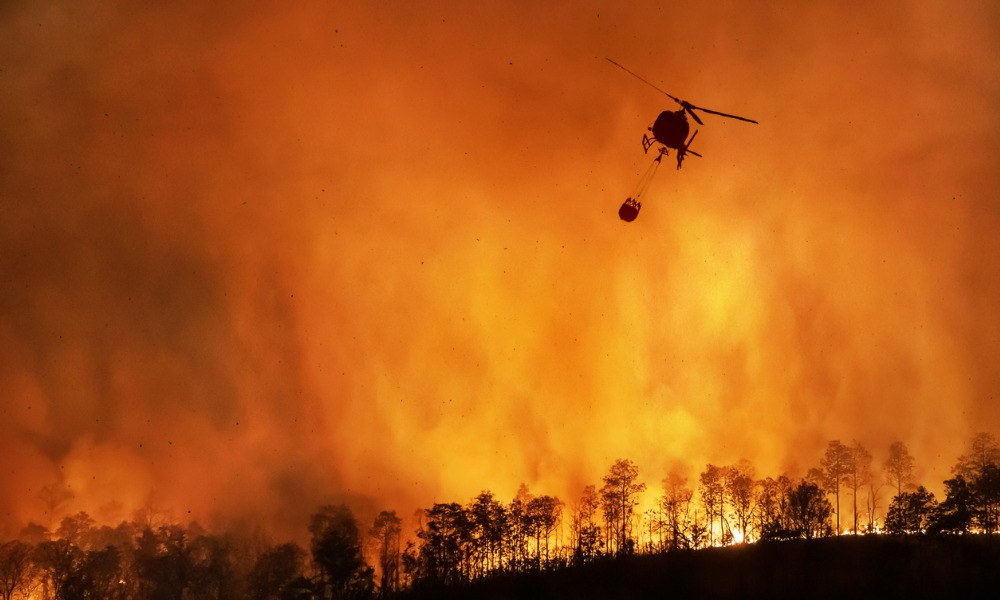Behind the climate risk-driven insurer retreat, and how it could spread to Asia

Behind the climate risk-driven insurer retreat, and how it could spread to Asia | Insurance Business America
Risk Management News
Behind the climate risk-driven insurer retreat, and how it could spread to Asia
The fires that raged in California may have opened a can of worms that will have consequences in the East
Risk Management News
By
Kenneth Araullo
The wildfires in California have led to State Farm’s exit from insuring new homeowners in the state, with growing climate risks and inflation blamed. While climate risk-driven insurer retreats are not a stranger to the US, the effects of climate change and the billions of uninsured losses that it brought across the whole industry may have just meant that these retreats will soon be happening across other regions in the future – especially Asia.
In his latest research, MSCI ESG and climate research senior associate Cody Dong generated a forward-looking climate-exposure assessment of insured assets to different hazards and climate scenarios. This was utilized through MSCI’s own set of metrics, as well as insurance underwriting data. What it found was that by 2050, 44% of counties in the US could have a hazard-percentile score of over 75, utilising the 3°C REMIND NGFS NDC scenario.
“A score of 75 for an asset in the corresponding region implies the asset experiences more wildfires than 75% of the assets in the reference dataset (i.e., assets in the MSCI ACWI Index under current climate conditions),” Dong said.
Applying the same methods to Asia, with some tweaking to reflect extreme heat and tropical cyclones as the most concerning hazards, Dong found that by 2050, 9% of Chinese districts will have an extreme heat percentile score of 75, and 9% of districts in China will have a tropical cyclones percentile score of over 75.
“For Japan, by 2050, no municipal region has an extreme heat percentile score over 75 but 91% of Japanese municipal regions have a tropical cyclones percentile score over 75,” he said.
Given these findings, Dong said that the next few decades will see higher catastrophe exposure for property insurance policies in these regions. As physical climate risks intensify, insurers will see additional pressure on individual profitability, leading to underinsured households once retreats begin.
“Property insurance policies are typically renewed each year. As a result, insurers could enjoy the luxury of annual underwriting adjustments. However, this may lead to shortsighted underwriting strategies,” Dong said. “As climate trends may alter the attractiveness of P&C insurance markets in certain regions, some insurers are taking steps to reduce [their] catastrophe risk exposure. For example, French insurance giant AXA was reported considering the sale of its property reinsurance arm. Forward-looking regional hazard insights could help inform insurers’ long-term underwriting strategies.”
However, while some insurers may find themselves reeling because of these risks, those with higher risk appetites may also want to rise to the challenge and grow their businesses across underpenetrated markets.
“Natural disasters cost US$313 billion economic losses globally in 2022 average. Though 2022’s global protection gap (i.e., losses not covered by insurance) of 58% was one of the lowest levels on record, APAC region still significantly lagged rest of world with 86% of losses in APAC missing insurance coverage. Closing this protection gap could represent growth opportunities for APAC insurance companies,” he said.
Part two of Dong’s research and his conversation with Insurance Business Corporate Risk will be published in the coming weeks. Stay tuned.
What are your thoughts on this story? Please feel free to share your comments below.
Keep up with the latest news and events
Join our mailing list, it’s free!






